
Florence: A City Immersed in Fame, Water and Gardens
Posted on: February 2017Dr Eleni Tracada, University of Derby
Dr Eleni Tracada - University of Derby
 |
Dr. Eleni Tracada is Principal Tutor in the Built Environment (Architecture) at the University of Derby, UK; Chartered Member RIBA Part III; Senior Fellow of HEA. She graduated in architecture, Faculty of Architecture of Florence, Italy (1980) and worked as a self-employed architect in Florence (1983-1993). She was awarded a MA in Interior Design at Manchester Metropolitan University (1996) and a PhD by Published Works at the University of Derby (2015). She taught Interior Design at Leeds College of Art & Design, Leeds (2001-2007). She is a member of the Scientific Committee of the International Society of Biourbanism; Editor in Chief of the Journal of Biourbanism (2011-2014). She participated in international research projects, such as BEST Leonardo Lifelong learning (2011-2013), Wor(l)ds which Exclude (2013-2014), Dance Architecture Spatiality (2012-2014). Her main research interests include architecture, human behaviours in urban spaces, architectural psychology and placemaking, ageing and vulnerable communities’ needs in accommodation and urban design and smart cities and economies. Her outputs disseminate ideas and recommendations on planning frameworks and social policies. |
As citizens we love urban agriculture along our streets and in our piazzas. We are inclined to be immersed in a naturalistic setting and have all our senses contented, whilst walking along our streets. And our inner self dreams and rejoices, when we come close to water. The effect of well-designed green infrastructure can define that feeling of happiness, relaxation and freshness in most urban spaces. We love countryside, but we are not able to have it every day. But we can recreate this to a certain extent in cities, to spend some quality time by enjoying daylight walks in green spaces or by spending time in other recreational activities in open green spaces.
Today we believe that the integration of human and natural systems through a network of spaces in urban settings should be able to create perfect concepts and designs for the future of our cities. We create green infrastructure to maintain human physical and psychological health. But there is a trade-off. Our pace of life and how urban designers often design cities does not allow us to understand how ecosystems work in reality. Designers are anthropocentric in their processes and final outcomes. Green infrastructure in cities addresses pollution, habitat of some species, recreation, open space and urban form; it expresses people’s relationship to the environment in terms of resource management primarily. This means that, through design, the natural world is rehabilitated into urban green arrangement for the economic and cultural benefit of humans. We profess green infrastructure by providing sound ecosystem services and by promising to preserve human benefits
It has been shown that that citizens are motivated to participate in the improvement and maintenance of civic landscapes when these latter contribute to the quality of life of the people living in proximity. There is also convincing evidence that cultural ecosystem services can be aesthetic and spiritual and that people respond to landscape beauty and scale with admiration and respect. Landscape architecture has the power to stimulate experiences of cool, green colour of the forest and implicates humid, fragrant air. Landscape designers add sound and thrill by means of dynamic patterns of rushing water and especially whitewater and deep pools. We stroll in a landscape made of sounds and views of running water and this reminds us immediately the image of a powerful river; we want the green infrastructure to lead us from places where we live to places like rough rivers and spectacular waterfalls.
Designed landscapes have always blended with built manmade environment in a dynamic way. Architecture and engineering have already created an invaluable heritage; they are still dynamically cooperating, forming and developing the future of humanity. Hence, natural and artificial landscapes interweave with built marvels of human creativity; historic places and urban areas blend in harmony with natural habitat. Think Central Park in New York for example.
Most historical cities emerged along water sources. Predominantly water has always helped the citizens with their trades and economic growth (See Ill. 1).
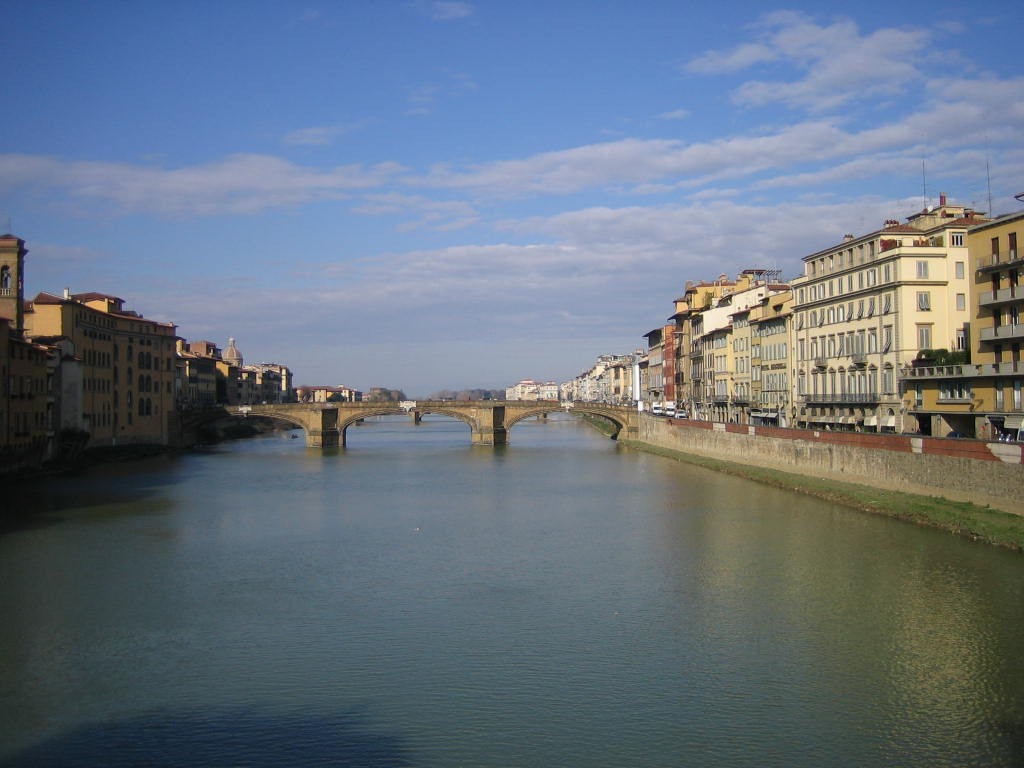
Ill. 1: Arno River - View from Ponte Vecchio Bridge (towards South) © the author
However at times rivers and large water sources become malevolent elements, when their inundations destroy cities. I lived for many years in Florence, Italy and Arno River is still the wild beast ruling the entire territory from the mountainous northern Tuscany up to the seaside. Although people still remember the great devastation that the river made in 1966 with his water inundating the entire plain inside and outside Florence, they also treasure and love this source of water (See Ill. 2 & 3). The water in this river has been always the central character of an everlasting drama in which people and nature cooperate and act as one dynamic ecosystem.
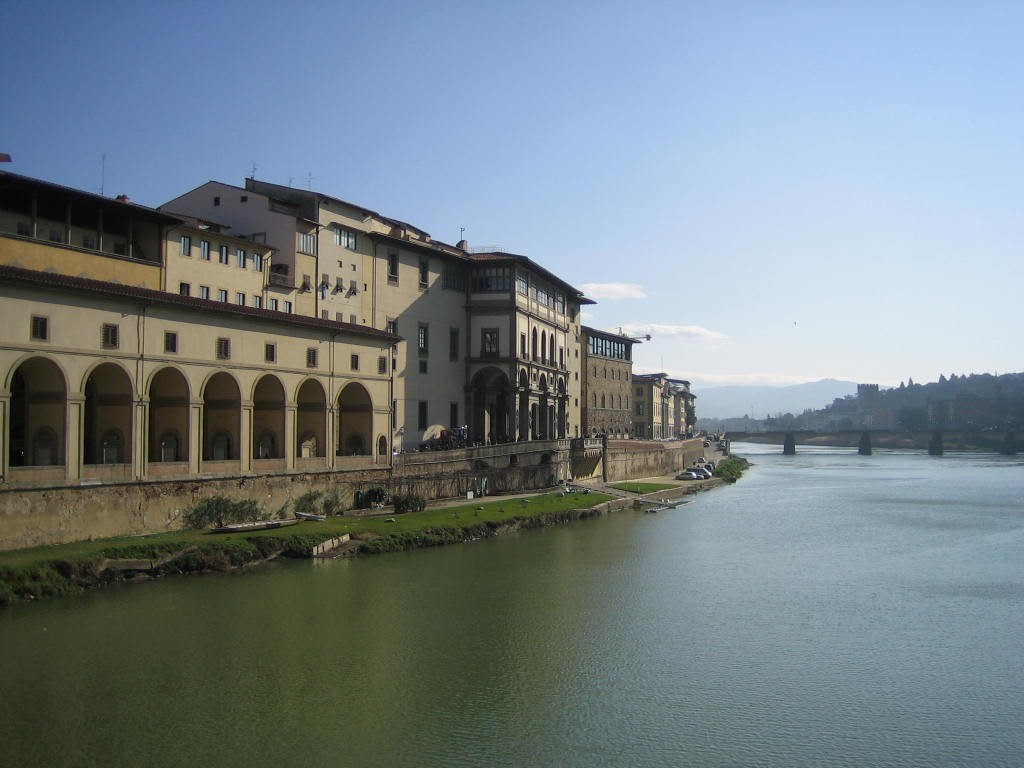
Ill. 2: Arno River along the Uffizi promenade © the author
Ponte Vecchio Bridge became famous all over the world during celebrations and ferocious inundations (See Ill. 3 & 4). In good times, this ancient bridge is a relaxing promenade leading from the old centre towards Boboli Gardens, one of the most beautiful green parks of Renaissance and beyond. As students of architecture in Florence, we used to walk along this route to reach the gardens, relax, think, and be inspired, whatever the weather. The gardens encompass artificial ponds, fountains and grottos. Boboli Gardens’ wells and nearby fountains at the corners of the streets or in piazzas are still fed by Arno River’s water thus linking nature into the urban streetscape. (See Ill. 5 & 6). Indeed Boboli gardens and its water has the same effect on the citizens of Florence that Central Park has to people who live and work in New York.
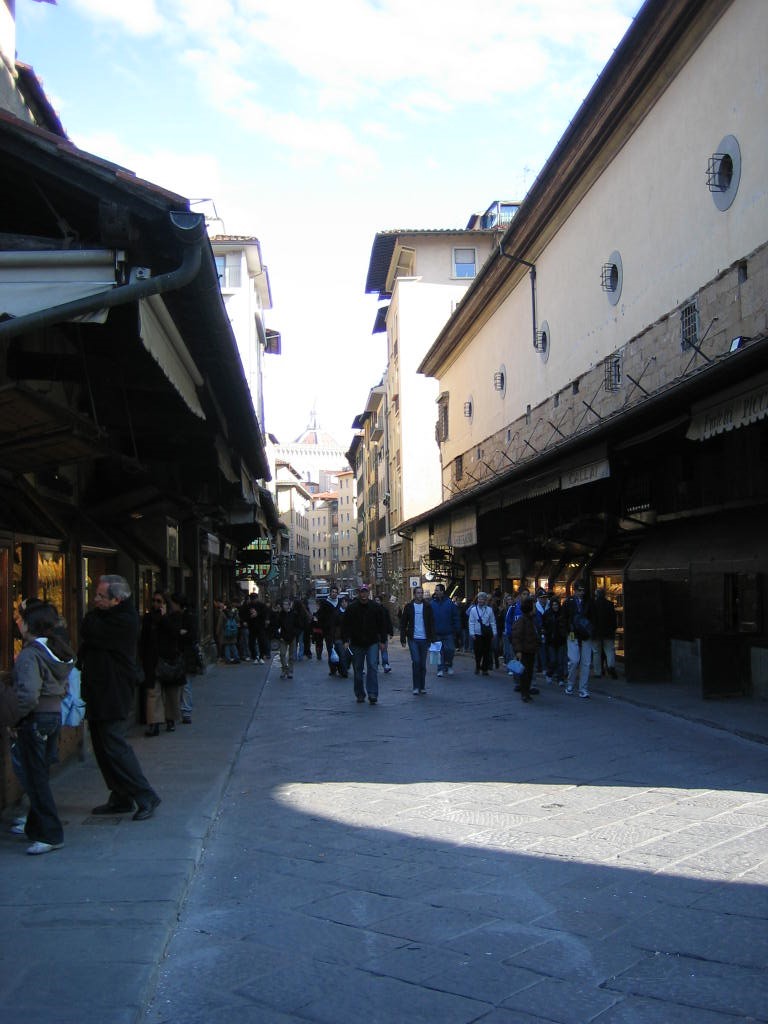 |
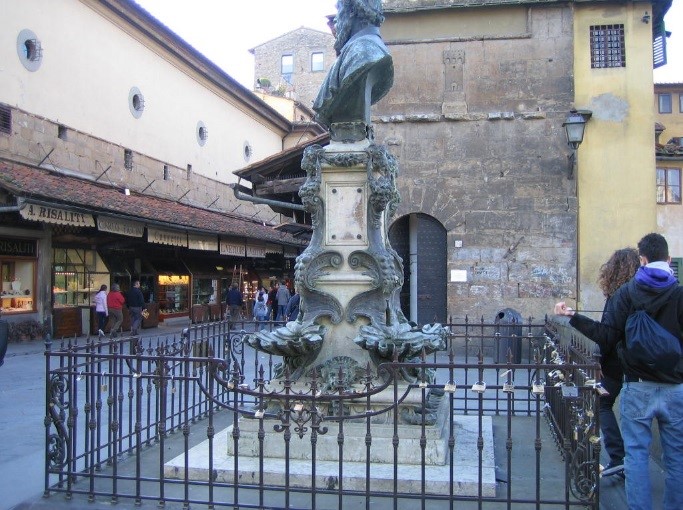 |
Ill. 3 & 4: Ponte Vecchio Bridge: a promenade overhanging Arno River © the author
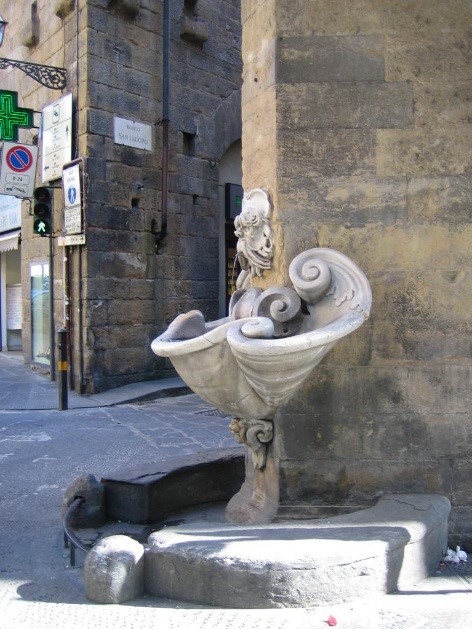
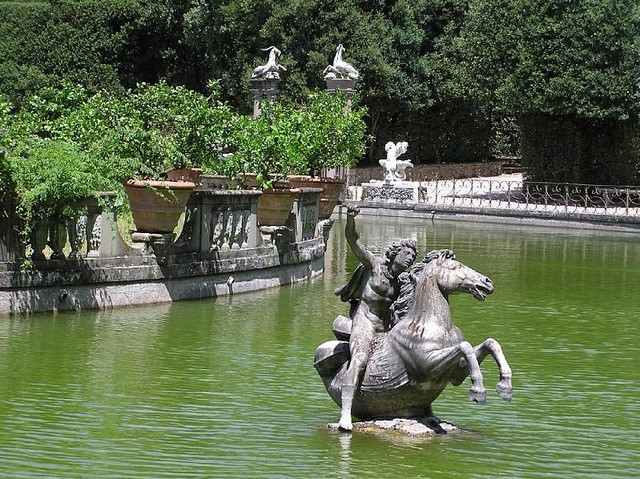
Ill. 5 : (left) Bernardo Buontalenti’s fountain © the author
Ill. 6 (right): Perseus and horse, Boboli Gardens, Firenze - Courtesy © Edizioni Forme Libere



